#edmund crouchback
Photo
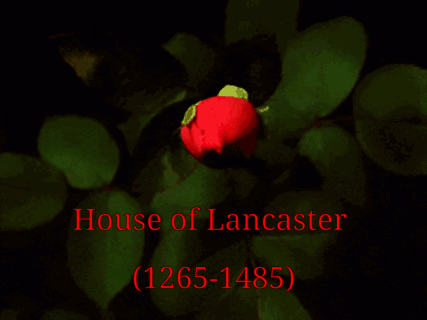
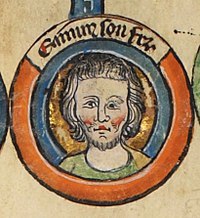






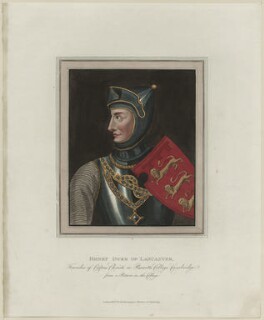
“The Houses of Plantagenet and Lancaster had not always been united. The Duchy of Lancaster - as it was later called - had emerged in the thirteenth century at the end of the Second Barons' War and death of the rebel Lord Simon de Montfort at Evesham.
The youngest son of Henry III, Edmund Crouchback, inherited de Montfort Earldom of Leicester and, later, Lancaster. By 1269, Edmund was on track to become an incredibly wealthy territorial magnate, like all who would succeed him.
Edmund, Earl of Lancaster, was a popular prince a capable and pious soldier - nicknamed Crouchback due to the motif of the cross he bore on his shield and wore on his back whilst on crusade.
He was fiercely loyal to his brother King Edward I (Longshanks'), fighting in his various wars across Scotland and France and overseeing extensive Plantagenet castle-building projects in Wales.
Over time Edmund accumulated a series of dignities, land and property. By the end of his life he was extremely powerful, with land dotted throughout the realm. After Edmund's death in Bayonne in 1296, he was interred at Westminster Abbey and his wealth distributed among his children: Thomas, Henry and John. Thomas inherited the title Earl of Lancaster. At the end of the thirteenth century, the relationship between the house of Lancaster and the Plantagenets was positive.
After Edward II ascended the throne, he immediately bestowed a royal title - Earl of Cornwall - on his favourite (and suspected lover) Piers Gaveston. This instantly sparked massive opposition from the nobility, and Thomas of Lancaster became a leading player in an uprising against the King and his favourite. In an unforgiving dispute, Gaveston was eventually caught and executed on Lancaster's lands near Kenilworth, infuriating the King and leading him to call Thomas of Lancaster a rebel and a traitor.
After Gaveston's death, domestic politics was turned on its head: Thomas of Lancaster exercised his authority and undermined the King. He refused to serve in the war against the Scots, and went so far as to agree to a personal truce with the Scottish lords, working under the pseudonym King Arthur. After years of growing animosity between the cousins, an influential noble family - the Despensers - rose to prominence at court and helped Edward Il seek retribution.
Edward II had never forgiven his cousin for Gaveston's murder and, in 1322, finally took his revenge. Thomas of Lancaster was arrested after the Battle of Boroughbridge and tried for treason - with the Despensers and the King as members of the tribunal. A week after his arrest, Thomas of Lancaster, dressed in an old surcoat, was carried on a donkey a mile from Pontefract Castle, where he was executed. The only mercy extended was that he was at least spared the prescribed fate of a convicted traitor, that of being hung, drawn and quartered.
As he was of royal blood, he was granted death by beheading. After Thomas’s conviction and execution as a traitor, Lancastrian loyalty was called it into question: that historical mistrust would haunt John of Gaunt throughout his political and personal life.
When Gaunt inherited the Lancastrian lands, nearly forty years later, it was claimed that blood trickled from Thomas of Lancaster's tomb - a grim omen of an uncertain dynastic future.
Thomas became a posthumous icon, which perhaps made the Lancastrian position all the more dangerous. Shortly after his death, cult began to emerge around his effigy, said to induce miracles-even his hat was believed to cure headaches. By the time Henry- his younger brother and heir to the Lancastrian lands - installed a memorial cross for the murdered Thomas, the dead Earl had achieved a significant following, with three attempts to have him canonised.
With Edward Il pitted against his Queen, Isabella, and her lover Roger Mortimer, the dynastic future of England was precarious. The Lancastrian administration, however, remained constant. Whilst the royal family were embroiled in a bitter feud, Henry, Earl of Lancaster, invested in Leicester as the heart of Lancastrian affairs. He renovated Leicester Castle but his greatest project was in the south-west of the town, the Newarke - a hospital and church - that employed generations of local labourers.
From 1330, Henry of Lancaster created a home to the Lancastrian dynasty in Leicestershire and brought the previously quiet town of Leicester to the forefront of English consciousness. Henry was popular in Leicester; the citizens of the town respected him and he carefully considered their needs, even endowing funds for a public latrine, for the ease of all the said community. Yet it was his large building projects in Leicester thar benefitted local people most significantly. This positive relationship with the town continued with his son Henry of Grosmont, the future Earl of Derby, Duke of Lancaster and father in law of John of Caunt.
Over the course of his flowering career, and even after being raised to his Dukedom, Henry of Grosmont never shirked his feudal responsibility in Leicester, and the relationship between people and magnate remained steadfast. By the time Gaunt inherited the town, Leicester was unbendingly loyal to Lancaster.”
CARR, Helen. In: The Bleeding Tomb: a Lancastrian Inheritance. The Red Prince John of Gaunt duke of Lancaster. 2021.
Fan casting: Sean Bean as Edmund ‘Crouchback’; Adam Driver as Thomas of Lancaster; Aneurin Barnard as Henry of Lancaster; Nicolaj Coster Waldau as Henry of Grosmont. *
*please notify if these gifs were used inappropriatedly; not mine to claim just to illustrate the characters.
#house of lancaster#henry of lancaster#thomas of lancaster#edmund crouchback#edmund plantagenet#house of plantagenet#Plantagenets#lancastrians#simon de montford#sean bean#aneurin barnard#adam driver#nicolaj coster waldau
19 notes
·
View notes
Text
#otd 5 June 1296 – Edmund Crouchback, Earl of Lancaster, Leicester & Derby died (b. 1245)
.
He was the second surviving son of King Henry III of England & Eleanor of Provence.
.
.


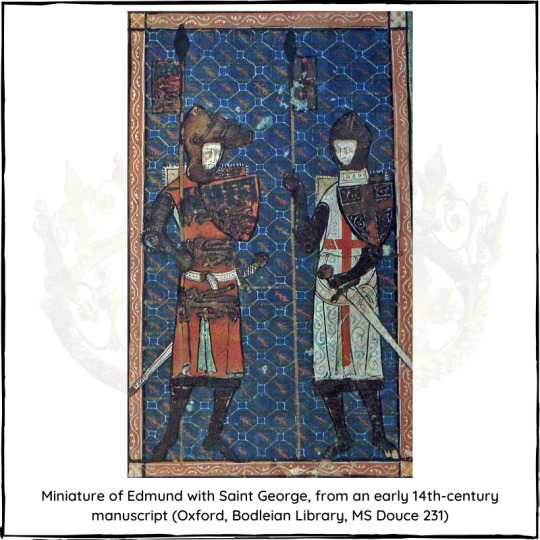
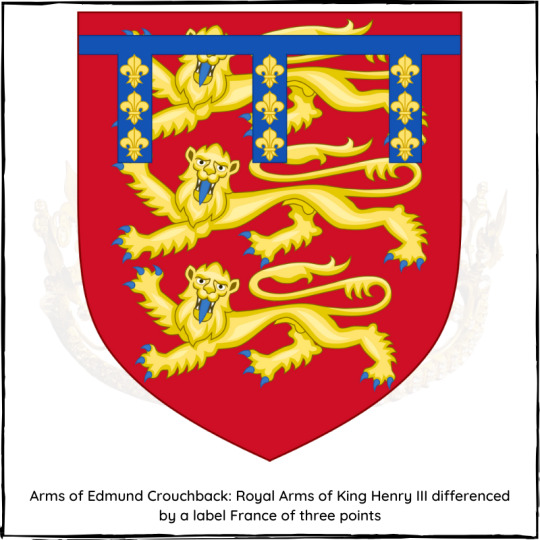
5 notes
·
View notes
Photo
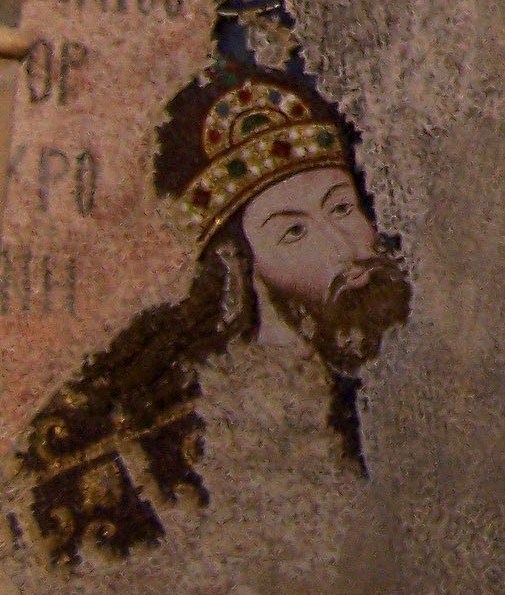
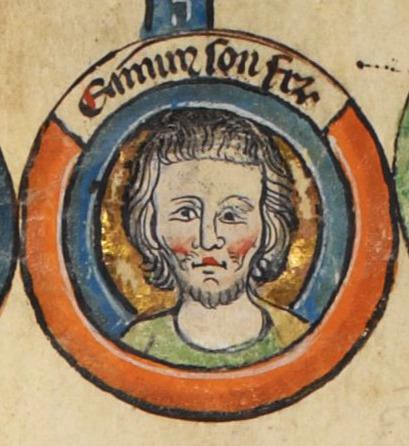
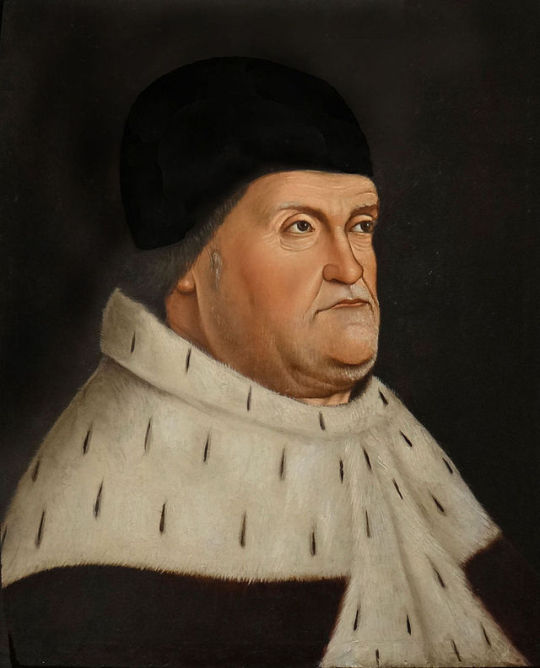
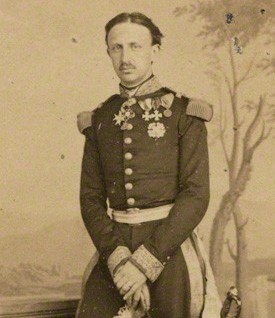

Royal Birthdays for today, January 16th:
Isaac Komnenos, Sebastokrator of the Byzantine Empire, 1093
Edmund Crouchback, Earl of Lancaster and Leicester, 1245
René of Anjou, King of Naples, 1409
Francis II, King of the Two Sicilies, 1836
Fuad II, King of Egypt, 1952
#rene of anjou#isaac komnenos#francis ii#fuad ii#Edmund Crouchback#royal birthdays#long live the queue
73 notes
·
View notes
Quote
The most famous of all these Lancastrian symbols is the red rose, associated with the county itself and reputedly adopted by Edmund Crouchback, the first earl, following his marriage to Blanche of Artois in 1276. This was the genus of the dynasty, although the rose symbol lay fallow for a century until John of Gaunt adopted it again on his marriage to Blanche, Edmund’s great-granddaughter.
Amy Licence, Red Roses: Blanche of Gaunt to Margaret Beaufort
An interesting claim, for which unfortunately the author does not provide a source.
#'blanche of gaunt' [sic]#blanche of lancaster#john of gaunt#historicwomendaily#historian: amy licence#red roses: blanche of gaunt to margaret beaufort
22 notes
·
View notes
Photo

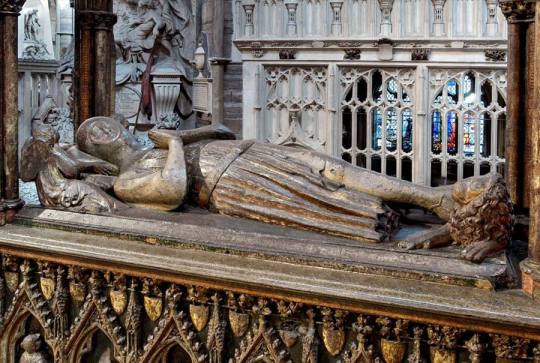


Edmund Crouchback (1245 – 1296),1st Earl of Lancaster, Leicester, and Derby was a member of the House of Plantagenet. He was the second surviving son of King Henry III of England and Eleanor of Provence.The monument inside of Westminster Abbey is attributed to Alexander of Abingdon or Michael of Canterbury and was probably constructed between 1296 and 1301.
2 notes
·
View notes
Text
Westminster Abbey Weddings
There have been 16 royal weddings at the abbey since 1100, including:
1100 – King Henry I of England
1243 – Richard, Earl of Cornwall (later King of Germany), brother of King Henry III of England
1269 – Edmund of Crouchback, 1st Earl of Leicester and Lancaster, son of King Henry III
1290 – 7th Earl of Gloucester
1290 – John II, son of Duke of Brabant
1382 – King Richard II of England
1486 – King Henry VII of England
1919 – Captain the Hon. Alexander Ramsay
1922 – Viscount Lascelles
1923 – Prince Albert, Duke of York (later King George VI), second son of King George V
1934 – Prince George, Duke of Kent, son of King George V
1947 – Duke of Edinburgh and Princess Elizabeth (now Queen Elizabeth II)
1960 – Antony Armstrong-Jones (later Earl of Snowdon) and Princess Margaret, second daughter of King George VI
1963 – Hon. Angus Ogilvy and Princess Alexandra of Kent
1973 – Captain Mark Phillips Princess Anne, daughter of Queen Elizabeth II
1986 – Prince Andrew, Duke of York, 2nd son of Queen Elizabeth II
2011 – Prince William, Duke of Cambridge, grandson of Queen Elizabeth II
0 notes
Photo
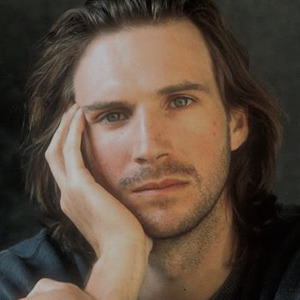


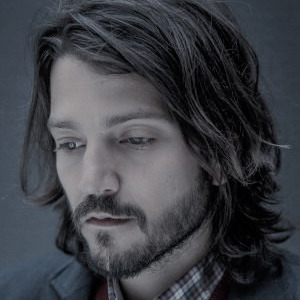





DEVI NAYAR ➵ LINEAGE
Ralph Fiennes as 🕈 King Henry III of England 🕈 — paternal grandfather
Bartek Borowiec as Edmund Crouchback — paternal half-uncle
Poppy Montgomery as 🕈 Eleanor of Provence 🕈 — paternal step-grandmother
Deigo Luna as William Henry Lockte — father
Summer Bishil as Devi Amrita Nayar Devon Voigt —
Aishwarya Rai Bachchan as 🕈 Manisha Indrajit Nayar 🕈 — mother
Janina Gavankar as Kala Ritsika Nayar — older half-sister
Suraj Sharma 🕈 Seth Jaidev Nayar 🕈 — older half-sister
Neelam Gill as 🕈 Jyoti Neela Nayar 🕈 — younger half-sister
#bloodwarstask#&& save your soul 'cuz you've been sinning in this city ⟪ musing ⟫#if nat can retcon historical figures into lycans so can fucking i
8 notes
·
View notes
Photo
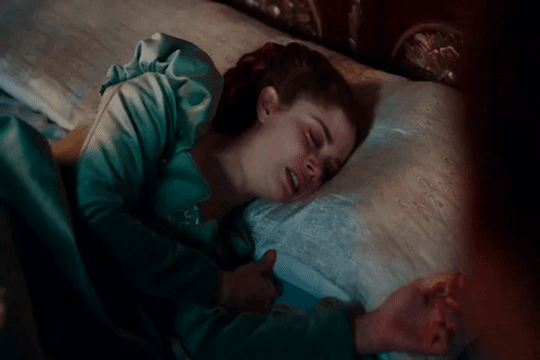
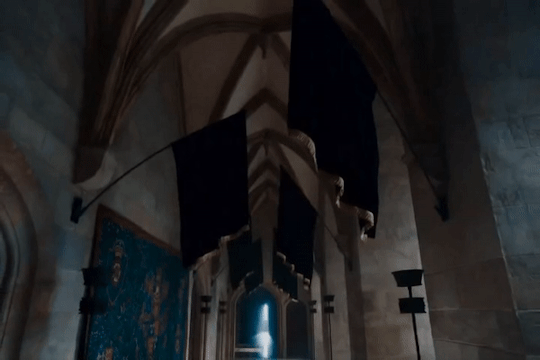
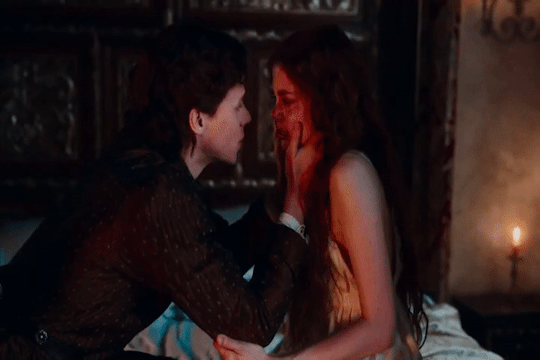
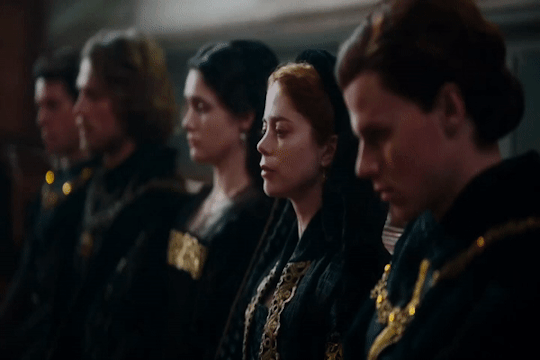
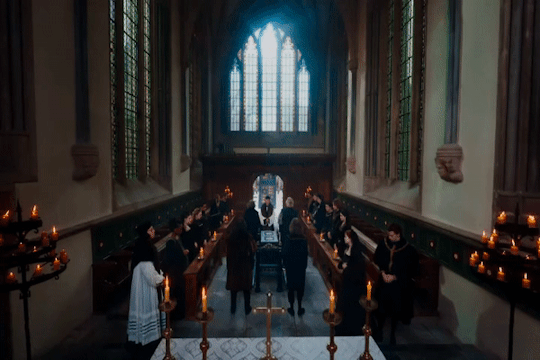
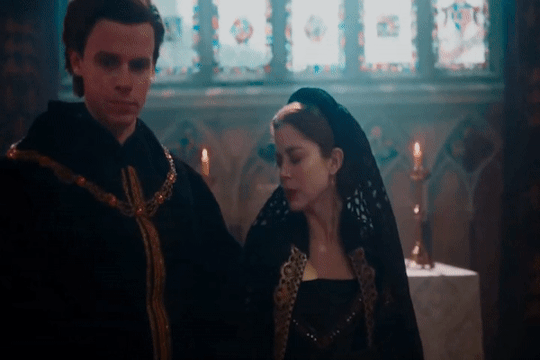
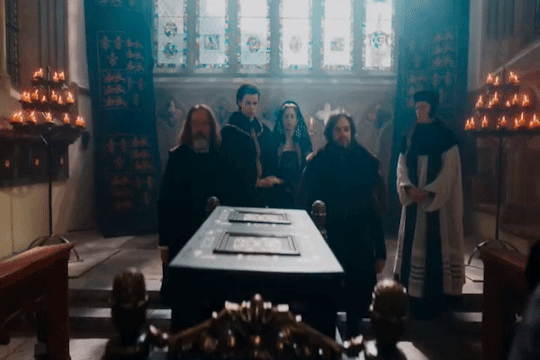
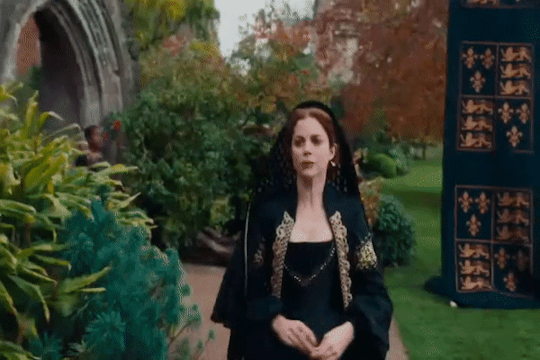
THE DEATH OF PRINCE HENRY, DUKE OF CORNWALL
22 FEBRUARY 1511
Ten days after Queen Katherine had presented the prizes to the victors of the spectacular jousts marking her son’s birth came terrible news. The infant prince, the Tudor heir, suddenly sickened and died at Richmond. He had lived only fifty-two days. The reason for his demise remains unknown; he may have succumbed to an infection, or perhaps it was what we think of as a crib death, one for which there is no easy explanation. Whatever the cause, the grief and shock for his parents were unimaginable. No blame was attached to the nursery staff, and Elizabeth Poyntz was rewarded for her service with an annuity of £20 (£300). The Keeper of the Wardrobe supplied an elaborate hearse on which the tiny body was conveyed to London.
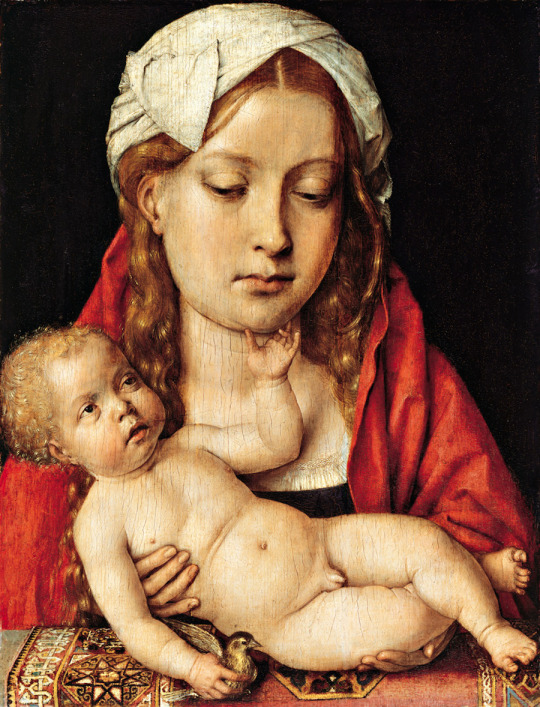
Henry took the calamity “wonderous wysely,” selflessly hiding his pain in order to console his wife. Katherine was heartbroken. She had endured so much already. Her brother and her elder sister had died very young, her nephew never lived to grow up, her mother was dead, her sister Juana was supposed to have been driven insane by grief, her own first husband had died within six months of her marriage, she had suffered a miscarriage and a false pregnancy. Now, just when everything appeared to be going right for her, her destiny in England fulfilled, her beautiful, seemingly healthy child lay in his coffin.Thus, the chronicler Edward Hall tells us, “lyke a naturall woman” she “made muche lamentacion,” her sorrow eased only gradually by the king’s “good persuasion and behaviour.”
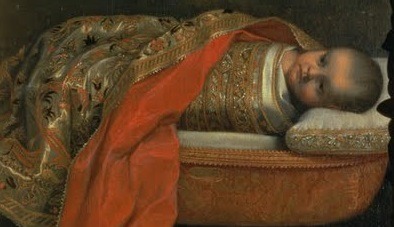
The baby was buried with all the honors due to a prince. Protocol dictated that neither king nor queen could attend in person; this was a task they must entrust to others. The tiny coffin was gently carried from Richmond Palace to the Thames, where three black-draped barges were waiting for the voyage along the river to the abbey church of St. Peter’s at Westminster, where Henry and Katherine had been crowned little more than a year before. Everyone who came with the little boy on his final journey, including the official mourners such as the Marquis of Dorset and the Earl of Essex, the courtiers, among them Sir Thomas Boleyn, who helped to carry the coffin, the six knights who held religious and regal banners, some of the royal servants, and the one hundred and eighty paupers who were paid to pray for the little boy’s soul, was garbed in black, albeit the quality of the cloth varied according to the rank of the wearer.

Wax candlelike torches lit the way, prayers were chanted and sung, all was done with solemnity and reverence as the entourage reached the abbey itself, where the monks waited to receive the mortal remains of the babyprince. There, in the beautiful church with its brightly colored wall paintings, its golden statues gleaming with jewels, and, on that sad day, its choir and knave draped in black, the child was laid to rest. His soul, wrote an observer, was “now among the holy innocents of God.” The site of his grave was chosen with touching care: he lies to the left of the altar, close to the tomb of Edmund Crouchback, Henry III’s youngest son, and near the shrine of the abbey founder, Saint Edward the Confessor. If he could not be a king in life, at least in death the baby could rest among kings. He lies there still.
Sources:
Julia Fox, Sister queens: the noble, tragic lives of Katherine of Aragon and Juana, Queen of Castile
Alison Weir, Henry VIII: the King and his Court
192 notes
·
View notes
Photo

Today in history, January 12, 1322: the death of Marie of Brabant:
"Marie of Brabant (13 May 1254 – 12 January 1322) was Queen consort of France. Born in Leuven, Brabant, she was a daughter of Henry III, Duke of Brabant, and Adelaide of Burgundy.
Marie married the widowed Philip III of France on 21 August 1274. His first wife, Isabella of Aragon, had already given birth to three surviving sons: Louis, Philip and Charles.
Philip was under the strong influence of his mother, Margaret of Provence and his minion, surgeon and chamberlain (Chambellan) Pierre de La Broce. Not being French, Marie stood out at the French court. In 1276, Marie's stepson Louis died under suspicious circumstances. Marie was suspected of ordering him to be poisoned. La Brosse, who was also suspected, was imprisoned and later executed for the murder. Margaret suspected Marie of ordering the death of Louis, and Philip did seem to agree more with his mother than his wife.
After the death of Philip III in 1285, Marie lost some of her political influence, and dedicated her life to their three children: Louis (May 1276 – 19 May 1319), Blanche (1278 - 19 March 1305) and Margaret (died in 1318). Her stepson, Philip IV was crowned king of France on 6 January 1286 in Reims.
Together with Joan I of Navarre and Blanche of Artois, she negotiated peace in 1294 between England and France with Edmund Crouchback, the younger brother of Edward I of England.
Marie lived through Philip IV's reign and she outlived her children. She died in 1321, aged 66, in the monastery at Les Mureaux, near Meulan, where she had withdrawn to in 1316. Marie was not buried in the royal necropolis of Basilica of Saint-Denis, but in the Cordeliers Convent, in Paris. Destroyed in a fire in 1580, the church was rebuilt in the following years."
#today in history#on this day in history#death#marie of brabant#mary of brabant#le queue#marie de brabant#mary de brabant
4 notes
·
View notes
Text
Eleanor of Provence (1223-1291)

Eleanor became Queen consort of England as the wife of King Henry III from 1236 until his death in 1272. She was the mother of Edward I.
Eleanor was born in Aix-en-Provence in southern France, she was the second daughter of Ramon Berenguer IV, Count of Provence (1198–1245) & Beatrice of Savoy (1198–1267). She was well educated as a child, & developed a strong love of reading.
Amazing Fact! Her three sisters also married kings.
Margaret of Provence (1221 – 1295) became Queen of France, by marriage to King Louis IX.
Sanchia of Provence ((c. 1225 – 1261), became Queen of Germany when her husband Richard of Cornwall became king.
Beatrice of Provence (c. 1229 – 1267), became Queen of Sicily as the wife of Charles I of Anjou, King of Sicily.
Like her mother, grandmother, & sisters, Eleanor was renowned for her beauty. She was a dark-haired brunette with fine eyes. Piers Langtoft speaks of her as "The erle's daughter, the fairest may of life". Eleanor married King Henry III of England on 14 January 1236. The first time she set eyes on her husband to be, was at the wedding ceremony, held at Canterbury Cathedral. She is reported as dressed in a shimmering golden dress that fitted tightly at the waist & flared out to wide pleats at her feet. Her sleeves were long & lined with ermine. The newlyweds rode into London the same day & were greeted by a procession of citizens. Eleanor was crowned queen consort of England in a ceremony at Westminster Abbey.

Eleanor was a loyal & faithful consort to Henry, but she brought a large number of uncles & cousins, "the Savoyards", & her influence with the King & her unpopularity with the English barons created friction during Henry's reign. Her uncle William of Savoy became a close advisor of her husband. Eleanor was named regent of England when her husband left for Gascony in 1253. Eleanor was devoted to her husband's cause.
She was sailing down the Thames in July 1263 when her barge was attacked by citizens of London. In revenge for their dislike Eleanor had demanded from the city all the back payments due on the monetary tribute known as queen-gold (where she received a tenth of all fines which came to the Crown). In fear for her life as she was pelted with stones, loose pieces of paving, dried mud, rotten eggs & vegetables, Eleanor was rescued by Thomas Fitzthomas, the Mayor of London, & took refuge at the bishop of London's home.
When king Henry III died in 1272, her son Edward, who was 33 years old, became king of England. She stayed in England as the queen dowager, & raised several of her grandchildren, Edward's son Henry & daughter Eleanor, & Beatrice's son John.
She later moved to a convent; but she remained in contact with her son, King Edward, & her sister, Queen Margaret of France.
Eleanor died on 24/25 June 1291 in Amesbury. She was buried in Amesbury Abbey. The exact site of her grave at the abbey is sadly unknown making her the only English queen without a marked grave. Her heart was taken to London & buried at the Franciscan priory of Greyfriars.
Eleanor was renowned for her learning, cleverness, & skill at writing poetry, as well as her beauty. She was known as a leader of fashion, importing clothes from France. She often wore parti-coloured cottes (a type of tunic), gold or silver girdles into which a dagger was casually thrust, she liked to wear red silk damask, & decorations of gilt quatrefoil, & to cover her dark hair she wore jaunty pillbox caps. Eleanor introduced a new type of wimple to England, which was high, "into which the head receded until the face seemed like a flower in an enveloping spathe". She developed a love for the songs of the troubadors as a child. She bought many romantic & historical books, of stories from ancient times to contemporary romances written in the period (13th century).
Children;
Eleanor Henry III had nine children together, sadly most died in childhood. Eleanor was especially devoted to her eldest son, Edward. When he was seriously ill in 1246, she stayed with him at the abbey at Beaulieu in Hampshire for three weeks. Her second youngest child, Katherine, may have had a degenerative disease that rendered her deaf. When she died at the age of three, both King & Queen suffered overwhelming grief.
Edward I (1239–1307), married Eleanor of Castile (1241–1290)
Margaret (1240–1275), married King Alexander III of Scotland
Beatrice (1242–1275), married John II, Duke of Brittany
Edmund Crouchback, 1st Earl of Lancaster (1245–1296), married Aveline de Forz in 1269, who died four years later, he then married Blanche of Artois in 1276
Richard (1247–1256)
John (1250–1256)
William (1251–1256)
Katherine (1253 - 1257)
Henry (1256–1257)
Did You Know?
Eleanor of Provence is the 21st great grandmother of Queen Elizabeth II.
Love Royal History? Visit our Royal Blog
www.thebritishmonarchy.co.uk

Eleanor (left) and Henry III, depicted by Matthew Paris in the 1250′s
#history#Eleanor of Provence#Queen consort#Queen of England#royal history#British monarchy#Medieval history#House of Barcelona#Henry III#plantagenets#English history#royal family#ancestry
16 notes
·
View notes
Photo

Henri II un anglo franco normardo que comienza una saga que explica las capas tectónicas de la historia de la dominación anglo-germana católica romana en Hispania/ Al- Andalus/ Sefarad. Se ve cómo entre ellos se casan, se matan, se reproducen y se pasan los territorios como pelotas. Guerras y competencias pero siempre entre las familias.
House of Plantagenet
Henry II
(1154–1189) is considered by some to be the first Plantagenet king of England.
Richard of York, 3rd Duke of York, adopted Plantagenet as his family name in the 15th century. Plantegenest (or Plante Genest) had been a 12th-century nickname for his ancestor Geoffrey, Count of Anjou and Duke of Normandy. One of many popular theories suggests the common broom, planta genista in medieval Latin, as the source of the nickname.[1]
Los Angenvins
Angevin kings of England //// Angevin Empire
Angevin is French for "from Anjou". The three Angevin kings were Henry II, Richard I and John. "Angevin" can also refer to the period of history in which they reigned. Many historians identify the Angevins as a distinct English royal house. "Angevin" is also used in reference to any sovereign or government derived from Anjou. As a noun, it refers to any native of Anjou or an Angevin ruler, and specifically to other counts and dukes of Anjou, including the ancestors of the three kings who formed the English royal house; their cousins, who held the crown of Jerusalem; and to unrelated members of the French royal family who were later granted the titles and formed different dynasties, such as the Capetian House of Anjou and the Valois House of Anjou.[4] Consequently, there is disagreement between those who consider Henry III to be the first Plantagenet monarch, and those who do not distinguish between Angevins and Plantagenets and therefore consider the first Plantagenet to be Henry II.[5][6][7][8]
Angevin zenith
Of Henry's siblings, William and Geoffrey died unmarried and childless, but the tempestuous marriage of Henry and Eleanor, who already had two daughters (Marie and Alix) through her first marriage to King Louis, produced eight children in thirteen years:[22]
William IX, Count of Poitiers (1153–1156)
Henry the Young King (1155–1183)
Matilda, Duchess of Saxony (1156–1189)—married Henry the Lion, Duke of Bavaria. The eldest amongst the couple's children, Richenza, is probably the daughter English chroniclers call Matilda, who was left in Normandy with her grandparents in 1185 and married firstly to Geoffrey, count of Perche, and secondly to Enguerrand de Coucy. The eldest son, Henry, became duke of Saxony and count palatine of the Rhine. His brother Otto was nominated by his uncle Richard I as earl of York and count of Poitiers before being elected emperor in opposition to the Hohenstaufen candidate. Otto was crowned in Rome but he was later excommunicated and declared deposed. Childless, Otto lost power following the defeat of the Welf and Angevin forces at the Battle of Bouvines. The youngest child, William of Winchester married Helena daughter of Valdemar I of Denmark. Their only son, also called Otto, was the sole male heir of his uncle Henry. The ducal house of Brunswick-Lüneburg and the British royal house of Windsor both descend from him.[23]
Richard I, King of England (1157–1199). He had no legitimate offspring, but is thought to have had two illegitimate sons, of whom little is known, called Fulk and Phillip, Lord of Cognac.[24]
Geoffrey II, Duke of Brittany (1158–1186)—married Constance daughter of Duke Conan of Brittany and became duke of Brittany by right of his wife. The couple's son Arthur was a competitor to John for the Angevin succession.[25]
Eleanor, Queen of Castile (1161–1214)—married King Alfonso VIII of Castile. The couple's children included King Henry of Castile and four queen consorts, Berengaria, Queen of Leon, Urraca, Queen of Portugal, Blanche, Queen of France and Eleanor, Queen of Aragon.[26]
Joan, Queen of Sicily (1165–1199)—married firstly King William II of Sicily and secondly Count Raymond VI of Toulouse. Her children included Raymond VII of Toulouse.[27]
John, King of England (1166–1216)
La historia se perpetua en varias generaciones y matrimonios que dejan claro que el norte de la peninsula lógicamente por mar se corresponde con Inglaterra y Francia por igual.
Henry III had nine children:[59]
Edward I (1239–1307)
Margaret of England (1240–1275). Her three children predeceased her husband, Alexander III of Scotland; consequently, the crown of Scotland became vacant on the death of their only grandchild, Margaret, Maid of Norway in 1290.[60]
Beatrice, Countess of Richmond (1242–1275). She initially married John de Montfort of Dreux, and later married John II, Duke of Brittany.
Edmund Crouchback (1245–1296), who was granted the titles and estates of Simon de Montfort, 6th Earl of Leicester and the earldom of Leicester after Henry defeated Montfort in the Second Barons' War. Henry later granted Edmund the earldoms of Lancaster and Ferrers. From 1276, through his wife, Edmund was Count of Champagne and Brie.[61] Later Lancastrians would attempt to use Henry IV's maternal descent from Edmund to legitimise his claim to the throne, spuriously claiming that Edmund was the eldest son of Henry III but had not become king due to deformity.[62] Through his second marriage to Blanche, the widow of Henry I of Navarre, Edmund was at the centre of European aristocracy. Blanche's daughter, Joan, was queen regnant of Navarre and queen consort of France through her marriage to Philip IV. Edmund's son Thomas became the most powerful nobleman in England, adding to his inheritance the earldoms of Lincoln and Salisbury through his marriage to the heiress of Henry de Lacy, 3rd Earl of Lincoln.[63]
Four others who died as children: Richard (1247–1256), John (1250–1256), William (c. 1251/1252–1256), Katherine (c. 1252/3–1257) and Henry (no recorded dates).
Henry was bankrupted by his military expenditure and general extravagance. The pope offered Henry's brother Richard the Kingdom of Sicily, but the military cost of displacing the incumbent Emperor Frederick was prohibitive. Matthew Paris wrote that Richard stated: "You might as well say, 'I make you a present of the moon – step up to the sky and take it down'." Instead, Henry purchased the kingdom for his son Edmund, which angered many powerful barons. The barons led by Henry's brother-in-law Simon de Montfort forced him to agree to the Provisions of Oxford, under which his debts were paid in exchange for substantial reforms. In France, with the Treaty of Paris, Henry formally surrendered the territory of his Angevin ancestors to Louis IX of France, receiving in return the title duke of Aquitaine and the territory of Gascony as a vassal of the French king.[43]
Death of Simon de Montfort at the
Battle of Evesham
Disagreements between the barons and the king intensified. The barons, under Simon de Montfort, 6th Earl of Leicester, captured most of southeast England in the Second Barons' War. At the Battle of Lewesin 1264, Henry and Prince Edward were defeated and taken prisoner. De Montfort assembled the Great Parliament, recognized as the first Parliament because it was the first time the cities and boroughs had sent representatives.[64] Edward escaped, raised an army and defeated and killed de Montfort at the Battle of Evesham in 1265.[65] Savage retribution was inflicted upon the rebels, and authority restored to Henry. With the realm now peaceful, Edward left England to join Louis IX on the Ninth Crusade; he was one of the last crusaders. Louis died before Edward's arrival, but Edward decided to continue. The result was disappointing; Edward's small force only enabled him to capture Acre and launch a handful of raids. After surviving an assassination attempt, Edward left for Sicily later in the year, never to participate in a crusade again. When Henry III died, Edward acceded to the throne; the barons swore allegiance to him even though he did not return for two years.[65]
Constitutional change and the reform of feudalism
Edward I married Eleanor of Castile, daughter of King Ferdinand of Castile, a great grandson of Henry II through his second daughter Eleanor in 1254. Edward and Eleanor had sixteen children; five daughters survived to adulthood, but only one son survived Edward:[66]
Eleanor, Countess of Bar (1264/69−1298)
Three daughters (Joan, Alice, and Juliana/Katherine) and two sons (John and Henry) born between 1265 and 1271. They died between 1265 and 1274 with little historical trace.
Joan, Countess of Gloucester (1272–1307)
Alphonso, Earl of Chester (1273–1284)
Margaret, Duchess of Brabant (1275–1333)
Mary of Woodstock (1278–1332), who became a nun
Isabella (1279–1279)
Elizabeth, firstly Countess of Holland and on widowhood, secondly Countess of Hereford (1282–1316). Among her eleven children were the earls of Hereford, Essex, and Northampton, and the countesses of Ormond and Devon.
Edward II
Two other daughters (Beatrice and Blanche), who died as children.
Following Eleanor's death in 1290, Edward married Margaret of France, daughter of Philip III of France, in 1299. Edward and Margaret had two sons, who both lived to adulthood, and a daughter who died as a child:[67]
Thomas (1300–1338), whose daughter Margaret inherited his estates. Margaret's grandson, Thomas Mowbray, was the first duke of Norfolk, but Richard II exiled him and stripped him of his titles.
Edmund, Earl of Kent (1301 to 1330). Edmund's loyalty to his half-brother, Edward II, resulted in his execution by order of the rebel Mortimer and his lover, Edward's queen, Isabella. His daughter, Joan, inherited his estates and married her own cousin, Edward the Black Prince; together, they had Richard, who later became the English king.
Eleanor (1306–1311).
Más adelante ....
Fighting in the Hundred Years' War spilled from the French and Plantagenet lands into surrounding realms, including the dynastic conflict in Castile between Peter of Castile and Henry II of Castile. The Black Prince allied himself with Peter, defeating Henry at the Battle of Nájera. Edward and Peter fell out when Peter was unable to reimburse Edward's military expenses leaving him bankrupt.[75] The Plantagenets continued to interfere, and John of Gaunt, 1st Duke of Lancaster, the Black Prince's brother, married Peter's daughter Constance, claiming the Crown of Castile in her name. He invaded with an army of 5000 men. Fighting was inconclusive before Gaunt agreed a treaty with King Juan of Castile.[76] Terms of the treaty included the marriage of John of Gaunt's daughter Katherine to Juan's son, Enrique.[77]
entonces... John of Gaunt (1340–1399), after Blanche's death in 1369, John married Constance of Castile, trying unsuccessfully to obtain the throne of Castile. The marriage produced two children:Catherine of Lancaster (1372–1418)—married Henry III of Castile, with whom she was a great-grandmother of Catherine of Aragon, first wife of Henry VIII of England.John (1374–1375)Constance died in 1394, after which John married Katherine Swynford on 13 January 1396. Their four children were born before they married. The pope legitimised them in 1396, as did Richard II by charter, on the condition that their children could not ascend the throne:John (c. 1371/1372–1410)—grandfather of Margaret Beaufort, Henry VII's mother.Henry (1375–1447)Thomas (1377–1427)Joan (1379–1440)—Joan's son, Richard Neville, 5th Earl of Salisbury, and her grandson, Richard Neville, 16th Earl of Warwick, were leading supporters of the House of York.Edmund (1341–1402)—founder of the House of York. He had three children with Isabella of Castile:Edward (1373–1415)—killed at the Battle of Agincourt.Constance (1374–1416)Richard—(1375–1415)Blanche (1342)—died as a child.Mary of Waltham (1344–1362)—married John V, Duke of Brittany. No issue.Margaret (1346–1361)—married John Hastings, 2nd Earl of Pembroke. No issue.Joan (b. 1351)Thomas (1355–1397)—murdered or executed for treason by order of Richard II; his daughter, Anne, married Edmund Stafford.Edward's long reign had forged a new national identity, reinforced by Middle English beginning to establish itself as the spoken and written language of government. As a result, he is considered by many historians in cultural respects the first 'English' post-conquest ruler.[74]
No paraban jamás! sigue la tradición:
House of York
Edward III made his fourth son Edmund the first duke of York in 1362. Edmund was married to Isabella, a daughter of King Peter of Castile and María de Padilla and the sister of Constance of Castile, who was the second wife of Edmund's brother John of Gaunt. Both of Edmund's sons were killed in 1415.
María de Padilla (c. 1334 [1]–Seville, July 1361) was the mistress of King Peter of Castile.
María Díaz de Padilla
Arms of María de Padilla
Born1334
Died August 1361 (aged 26–27)
Juan García de Padilla 1st Lord of Villagera and María González de Henestrosa
Religion
Roman Catholicism
She was a Castilian noblewoman, daughter of Juan García de Padilla (died between 1348 and 1351) and his wife María González de Henestrosa[2] (died after September 1356). Her maternal uncle was Juan Fernández de Henestrosa, the King's favorite between 1354 and 1359[3] after Juan Alfonso de Alburquerque fell out of favor, and the mediator in an apparent pardon for Fadrique Alfonso, King Peter's half-brother. She was also the sister of Diego García de Padilla, Grand Master of the Order of Calatrava.[3]María’s family, members of the regional nobility,[4] originally came from the area of Padilla de Abajo, near Castrojeriz in the province of Burgos.
She is described in the chronicles of her time as very beautiful, intelligent, and small of body.[5]
Real Monasterio de Santa Clara en Astudillo (Palencia) founded by María de Padilla
Relationship with King Peter of Castile
King Peter met María in the summer of 1352 during an expedition to Asturias to battle his rebellious half-brother Henry. It was probably her maternal uncle, Juan Fernández de Henestrosa, who introduced them, as mentioned in the chronicle of King Peter’s reign written by Pero López de Ayala.[6] At that time, María was being raised at the house of Isabel de Meneses, wife of Juan Alfonso de Alburquerque, a powerful nobleman. They became lovers and their relationship lasted until her death despite the King’s other marriages and affairs. The Padillas were raised to various offices and dignities. Her uncle, Henestrosa, became Alcalde de los fidalgos.[7]
In the summer of 1353, under coercion from family and the main court favorite, Juan Alfonso de Alburquerque, Peter wed Blanche of Bourbon, the first cousin of King John II of France. Peter abandoned Blanche within three days when he learned that she had an affair with his bastard brother Fadrique Alfonso en route to Spain, and that the dowry was not coming.
Children
María and Peter had three daughters: Beatrice (born 1354), Constance (1354–1394), and Isabella (1355–1392), and a son, Alfonso, crown-prince of Castile (1359 - October 19, 1362).
Two of their daughters were married to sons of Edward III, King of England. Isabella married Edmund of Langley, 1st Duke of York, while the elder, Constance, married John of Gaunt, 1st Duke of Lancaster, leading him to claim the crown of Castile on behalf of his wife. Constance's daughter, Catherine of Lancaster, married Henry III of Castile in order to reunify any claim to succession that may have passed via Constance.
El Horror que nos somete:
The Order of Calatrava (Spanish: Orden de Calatrava Portuguese: Ordem de Calatrava) was the first military order founded in Castile, but the second to receive papal approval. The papal bull confirming the Order of Calatrava as a Militia was given by Pope Alexander III on September 26, 1164. Most of the political and military power of the order dissipated by the end of the 15th century, but the last dissolution of the order's property did not occur until 1838.
Origins and foundation
It was founded at Calatrava la Vieja in Castile, in the twelfth century by St. Raymond of Fitero, as a military branch of the Cistercian family.[1][2] The etymology of the name of this military order, Calatrava, conveys the meaning: "fortress of Rabah".
Rodrigo of Toledo describes the origins of the order:
Castle of Calatrava la Nueva, former parent headquarters of the order
"Calatrava is the Arabic name of a castle recovered from the Moslems, in 1147, by the King of Castile, Alfonso VII, called el Emperador. Located in what was then the southernmost border of Castile, this conquest was more difficult to keep than to make, especially at a time with neither standing armies nor garrisons were known. In part to correct this deficiency, the military orders such as Knights Templars were founded, where men could fulfill a vow of perpetual war against the Muslim. The Templars, however, were unable to hold Calatrava, and the king found further volunteer warriors when Raymond, Abbot of the Cistercian monastery of Fitero offered himself.
Los sueños de Re-conquista.. pero cual de ellas? sino la Romana por alusión y conexiones subterráneas?
Battles during the Reconquista
The first military services of the Knights of Calatrava were highly successful, and in return for the exceptional services they had rendered they received from the King of Castile new grants of land, which formed their first commanderies. They had already been called into the neighbouring Kingdom of Aragon, and been rewarded by a new encomienda (landed estate), that of Alcañiz (1179). But these successes were followed by a series of misfortunes, due in the first instance to the unfortunate partition which Alfonso had made of his possessions, and the consequent rivalry which ensued between the Castilian and Leonese branches of his dynasty. On the other hand, the first successes of the Reconquista in the 12th century, soon met up with a new wave of Islamic warriors, the invasion of the Almohads from Morocco. The first encounter resulted in a defeat for Castile.
Battle of Alarcos
After the disastrous Battle of Alarcos, the knights abandoned their bulwark of Calatrava to the Almohads (1195). Velasquez lived long enough to witness the failure of his daring scheme. He died the next year in the monastery of Gumiel (1196).[3] The order in Castile appeared to be finished, and the branch of Aragon sought primacy. The Knights of Alcañiz actually proceeded to elect a new grand master, but the grand master still living in Castile claimed his right. Finally, by a compromise, the master of Alcañiz was recognized as second in dignity, with the title of Grand Commander for Aragon.
The scattered remains of Castilian knights sheltered in the Cistercian monastery of Cirvelos, and there began to regroup and expand. They soon erected a new bulwark, Salvatierra Castle, where they took the name, which they kept for fourteen years, of Knights of Salvatierra (1198). But Salvatierra itself fell to the Almohad Caliphate in 1209.
Summoned by Pope Innocent III, foreign crusaders joined Iberian Christians. An early battle was the reconquest of Calatrava (1212), which was returned to its former masters. In the same year the battle of Las Navas de Tolosa turned the tide of Muslim domination in Spain. Having recovered its stronghold, and resumed the title of Calatrava (1216), the order nevertheless removed to more secure quarters of Calatrava la Nueva, eight miles from old Calatrava (1218). In 1221 the Order of Monfragüe was merged into that of Calatrava.
With the decline of Muslim power, new orders sprang up, including the Alcántara in the Kingdom of León and Avis in Portugal. Both began under Calatrava's protection and the visitation of its grand master. This age marks the climax of Iberian chivalry: it was then that King Ferdinand the Saint, after the definitive coalition of Castile and León (1229), in (1235) captured the capital of the old caliphate, Cordova, soon afterwards Murcia, Jaén, and Seville. The European crusade seemed at an end. Encouraged by these victories, Ferdinand's successor, Alfonso X, the Wise, planned a crusade in the East and contemplated marching, with his Castilian chivalry, to restore the Latin Kingdom of Jerusalem (1272).
Calatrava had developed abundant resources of men and wealth, with lands and castles scattered along the borders of Castile. It exercised feudal lordship over thousands of peasants and vassals. Thus, more than once, we see the order bringing to the field, as its individual contributions, 1200 to 2000 knights, a considerable force in the Middle Ages. Moreover, it enjoyed autonomy, being by its constitutions independent in temporal matters and acknowledging only spiritual superiors—the Abbot of Morimond and, in appeal, the pope. These authorities interfered, in consequence of a schism which first broke out in 1296 through the simultaneous election of two grand masters, García Lopez and Gautier Perez.
Lopez, dispossessed a first time by a delegate of Morimond, appealed to Pope Boniface VIII, who quashed the sentence and referred the case to the general chapter at Cîteaux, where Lopez was re-established in his dignity (1302). Dispossessed a second time, in consequence of a quarrel with his lieutenant, Juan Nuñez, Lopez voluntarily resigned in favour of Nuñez, who had taken his place (1328), on condition that he should keep the commandery of Zurita; as this condition was violated, Lopez again, for the third time, took the title of Grand Master in Aragon, where he died in 1336. These facts sufficiently prove that after the fourteenth century the rigorous discipline and fervent observance of the order's earlier times had, under the relaxing influence of prosperity, given place to a spirit of intrigue and ambition.
Peter of Castile entered into a conflict with the order. That prince had three grand masters in succession sentenced to death, as having incurred his suspicion: the first of these was beheaded (1355) on a charge of having entered into a league with the King of Aragon; the second, Estevañez, having competed for the grand mastership with the king's candidate, García de Padilla, was murdered in the royal palace, by the king's own treacherous hand; lastly García de Padilla himself, a brother of the royal mistress, fell into disgrace, upon deserting the king's party for that of his half brother, Henry the Bastard, and died in prison (1369).
The following is an incomplete list of former Grand Masters of the Order of Calatrava, the current grand master of the order is King Felipe VI of Spain
Don García (1164–1169)
Fernando Icaza (1169–1170)
Martín Pérez de Siones (1170–1182)
Nuño Pérez de Quiñones (1182–1199)
Martín Martínez (1199–1207)
Ruy Díaz de Yanguas (1207–1212)
Rodrigo Garcés (1212–1216)
Martín Fernández de Quintana (1216–1218)
Gonzalo Yáñez de Novoa (1218–1238)
Martín Ruiz de Cevallos (1238–1240)
Gómez Manrique (1240–1243)
Fernando Ordóñez (1243–1254)
Pedro Yáñez (1254–1267)
Juan González (1267–1284)
Ruy Pérez Ponce de León (1284–1295)
Diego López de Santsoles (1295–1296)
Garci López de Padilla (1296–1322)
Juan Núñez de Prado (1322–1355)
Diego García de Padilla (1355–1365)
Martín López de Córdoba (1365–1371)
Pedro Muñiz de Godoy y Sandoval (1371–1384)
Pedro Álvarez de Pereira (1384–1385)
Gonzalo Núñez de Guzmán (1385–1404)
Enrique de Villena (1404–1407)
Luis González de Guzmán (1407–1443)
Fernando de Padilla (a few months in 1443)
Alfonso de Aragón y de Escobar (end of 1443–1445)
Pedro Girón Acuña Pacheco (1445–1466)
Rodrigo Téllez Girón (1466–1482)
García López de Padilla (1482–1487)
Catholic Monarchs (from 1487 onwards)
King Juan Carlos I of Spain
King Felipe VI of Spain (Incumbent)
sigue con Isabella de Castilla una saga de la que pocos hablan para descifrar los poderes que llevamos soportando años y siglos:
Isabella was the youngest of the three daughters of King Peter of Castile by his favourite mistress, María de Padilla (d.1361).[1]
On 21 September 1371 Edward III's fourth son, John of Gaunt, 1st Duke of Lancaster, married Isabella's elder sister, Constance (d. 1394), who after the death of their father in 1369 claimed the throne of Castile. Isabella accompanied her sister to England, and on 11 July 1372, at about the age of 17, married John of Gaunt's younger brother, Edmund of Langley, 1st Duke of York, fifth son of King Edward III and Philippa of Hainault, at Wallingford, Oxfordshire, as part of a dynastic alliance in furtherance of the Plantagenet claim to the crown of Castile.[2] According to Pugh, Isabella and Edmund of Langley were 'an ill-matched pair'.[3]
As a result of her indiscretions, including an affair with King Richard II's half-brother, John Holland, 1st Duke of Exeter (d. 1400), whom Pugh terms 'violent and lawless', Isabella left behind a tarnished reputation, her loose morals being noted by the chronicler Thomas Walsingham. According to Pugh, the possibility that Holland was the father of Isabella's favourite son, Richard of Conisburgh, 3rd Earl of Cambridge, 'cannot be ignored'.[4]
In her will Isabel named King Richard as her heir, requesting him to grant her younger son, Richard, an annuity of 500 marks. The King complied. However, further largesse which might have been expected when Richard came of age was not to be, as King Richard II was deposed in 1399, and according to Harriss, Isabella's younger son, Richard, 'received no favours from the new King, Henry IV'.[5]
Isabella died 23 December 1392, aged about 37, and was buried 14 January 1393 at the church of the Dominicans at Kings Langley.[6] After Isabella's death, Edmund of Langley married Joan Holland, sister and co-heir of Edmund Holland, 4th Earl of Kent (9 January 1382 – 15 September 1408), with whom his daughter, Constance, had lived as his mistress (see above).[7]
Isabella was appointed a Lady of the Garter in 1379.[8]
Prodecencia: The Castilian House of Burgundy[1] is a cadet brach of the House of Ivrea descended from Raymond of Burgundy. Raymond married Urraca of the House of Himénez. Two years after his death, Urraca succeeded her father and became queen of Castille and Leon; Urraca's and Raymond's offspring ruled the kingdom from 1126 up to Peter of Castile, 1369.
Origins
Raymond was the fourth son of William I, Count of Burgundy (from the House of Ivrea) and arrived in the Iberian peninsula probably in 1086 with the army of Odo I, Duke of Burgundy, who siege the city Tudela, Navarre. In April 1087 the army abandoned the siege and returned home, but Odo, Raymond and Henry (Raymond's cousin) went west at the court of Alfonso VI king of Castile and León. There, Odo arranged the marriage of king's first daughter Urraca to Raymond on 1087; the couple received the county of Galicia as dowry.[2]In 1093 Alfonso VI married his second daughter Teresa to Henry and gave them the county of Portugal, which evolved to a kingdom.[3] In 1107 Raymond died; the next year died Sancho, king's only son and in 1109 the king himself. Urraca succeeded him up to her death and then next ruler was her son Alfonso VII, first king of Castile and León from the Castilian House of Ivrea:
The founder of the family's fortunes was a petty Burgundian count named Anscar, who, with the support of his powerful brother, the archbishop of Rheims Fulk the Venerable, brought Guy III of Spoleto to Langres to be crowned King of France in 887. Their plot failing, Anscar accompanied Guy back to Italy to seek that vacant throne and, in gratefulness to Anscar, Guy created the March of Ivrea to bestow on his Burgundian faithful. Anscar's descendants held the march until 1030. Perhaps the most illustrious scion of the house was his grandson Berengar, the first of three Anscarids to be crowned king of Italy.Berengar seized the throne in 950 after the death of Lothair II. He was opposed, immediately, by Lothair's widow Adelaide, whom he imprisoned after his attempt to force her marriage to his son, Adalbert II, failed. Emperor Otto I came down the peninsula and forced him to do homage in 952. For the next eleven years, Berengar and his co-crowned son governed Italy until Otto finally formally deposed them in 963.From 1002 to 1014 Arduin of Italy held the Italian throne in opposition to the German Henry II
Castilian branch of Ivrea
Raymond, fourth son of Count William I of Burgundy, travelled to Castile-León in the late eleventh century and there married Urraca, the future monarch. She was succeeded by their son, Alfonso VII. Subsequent monarchs of Castile and León were their agnatic descendants until the 16th century, although the crown had passed to an illegitimate cadet branch, the House of Trastámara, in the late 14th century.
Country
Holy Roman Empire
Kingdom of Italy
Frankish Empire
Papal States
County of Burgundy
Galicia
Castile
and
León
Ethnicity
Frankish
–
Burgundian
Founded9th century
Founder
Anscar I
Final rulerItaly:
Arduin
Burgundy:
Joan II
Castile, Galicia and León:
Peter
Orange:
Philibert
Titles
Pope (Elective)
King of Italy
King of Galicia
King of Castile
King of León
Margrave of Ivrea
Count of Burgundy
Count of Mâcon
Holy Roman Empress
Queen of France(Regent)
La hermana Constance of Castile (1354 – 24 March 1394) was claimant of the Castilian throne after the death of her father Peter, King of Castile and León, also known as Peter the Cruel. Her mother was María de Padilla, whom Peter had secretly married, but was then forced to repudiate; however he kept her as his mistress.Constance of CastileDuchess of LancasterBorn1354Castrojeriz, CastileDied24 March 1394 (aged 39–40)Leicester Castle, LeicestershireBurialChurch of the Annunciation of Our Lady of the Newarke, LeicesterSpouseJohn of Gaunt, 1st Duke of LancasterIssueCatherine, Queen of CastileHouseCastilian House of IvreaFatherPeter of CastileMotherMaría de PadillaReligionRoman CatholicismConstance was married, at Roquefort, near Bordeaux, Guienne, on 21 September 1371, to John of Gaunt, 1st Duke of Lancaster, who was the third son of Edward III of Englandand Philippa of Hainault, as his second wife. Constance's younger sister, Infanta Isabella, married Edmund of Langley, 1st Duke of York, the fourth son of King Edward III and Queen Philippa.On 9 February 1372 Constance made a ceremonial entry into London as Queen of Castile, accompanied by Edward, the Black Prince, and an escort of English and Castilian retainers and London dignitaries. Crowds lined the streets to see her as she processed to the Savoy Palace in the Strand where she was ceremonially received by her husband, who had proclaimed himself King of Castile and León on 29 January.[1]The surrender of Santiago de Compostela to John of Gaunt. Constance is the lady on horseback.This was the way for Gaunt to obtain a kingdom of his own (he had been offered Scotland as a youth by the childless David II but nothing came of this), as his nephew Richard II and the descendants of his brother Lionel of Antwerp, 1st Duke of Clarence, stood between him and the Crown of England. John of Gaunt claimed the title of King of Castile jure uxoris, and insisted that English nobles address him as "my lord of Spain", but was unsuccessful in his attempts to obtain the crown. Their daughter Catherine of Lancaster was married to the king of the Trastámara line, Henry III of Castile, thus uniting these two rival claims.Constance died at Leicester Castle and was buried at the Church of the Annunciation of Our Lady of the Newarke, Leicester.[2][3]
y le sigue Berengaria (Castilian: Berenguela; nicknamed the Great (Castilian: la Grande); 1179 or 1180 – 8 November 1246) was queen regnant of Castile[1] in 1217 and queen consort of León from 1197 to 1204. As the eldest child and heir presumptive of Alfonso VIII of Castile, she was a sought after bride, and was engaged to Conrad, the son of Holy Roman Emperor Frederick I Barbarossa. After his death, she married her cousin, Alfonso IX of León, to secure the peace between him and her father. She had five children with him before their marriage was voided by Pope Innocent III.Berengaria1753 statue in MadridQueen of Castile and ToledoReign6 June – 31 August 1217PredecessorHenry ISuccessorFerdinand IIIQueen consort of LeónTenure1197–1204Born1179 or 1180BurgosDied8 November 1246 (aged 66)Las Huelgas near BurgosBurialLas Huelgas near BurgosConsortConrad II, Duke of Swabia(m. 1187; died 1196)Alfonso IX of León(m. 1197; annulled 1204)Issuemore...Ferdinand III of CastileAlfonso, Lord of MolinaBerengaria, Latin EmpressHouseCastilian House of IvreaFatherAlfonso VIII of CastileMotherEleanor of EnglandReligionRoman CatholicismWhen her father died, she served as regent for her younger brother Henry I in Castile until she succeeded him on his untimely death. Within months, she turned Castile over to her son, Ferdinand III, concerned that as a woman she would not be able to lead Castile's forces. However, she remained one of his closest advisors, guiding policy, negotiating, and ruling on his behalf for the rest of her life. She was responsible for the re-unification of Castile and León under her son's authority, and supported his efforts in the Reconquista. She was a patron of religious institutions and supported the writing of a history of the two countries.
1 note
·
View note
Text
Edmund Crouchback
Edmund Crouchback is the member of Politician & Capricorn groups. Edmund Crouchback Birth Date January 16, 1245 & Birth Place is England. Let’s check, Edmund Crouchback Net Worth 2018, Salary, Income and Property details.
Edmund Crouchback is a well-known Politician, who was born on January 16, 1245 in England. Edmund Crouchback died on Jun 5, 1296. Son of Henry III and first Earl of Leicester…
View On WordPress
0 notes
Photo
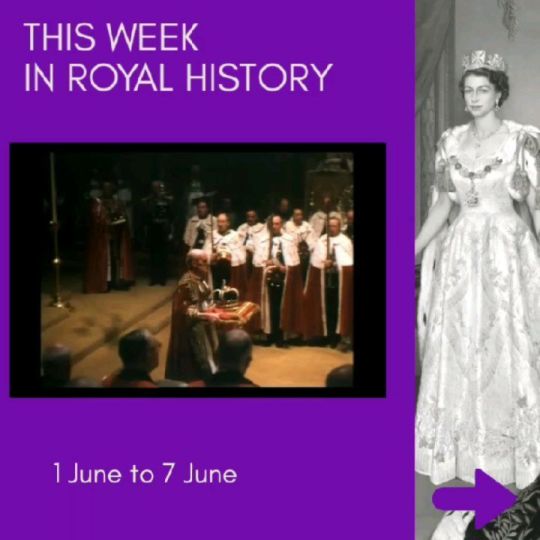
NEW ‘This Week in Royal History’ blog. Link to the Royal Blog is in the bio section on our home page 👑
.
▪️Henry VIII takes a back seat as he lets his 'second wife’ be the focus of attention during her coronation.
.
▪️ Disaster strikes London as the dreaded plague returns, Elizabeth I’s well intentioned council instruct householders to make bonfires in the streets at seven in the evening to consume the 'corrupt’ air!
.
▪️ Henry V weds his French bride Catherine of Valois in Troyes, France.
.
😳 Did you know? Her tomb was deliberately destroyed & her coffin lid accidentally raised during the reign of Henry VII. She became a tourist attraction for the best part of four hundred years. The Diarist Samuel Pepys visited on his 36th birthday in 1669 & wrote: “I to the abbey went, & by favour did see the body of Queen Catherine of Valois, & had the upper part of the body in my hands, & I did kiss her mouth, reflecting upon it I did kiss a Queen: & this my birthday & I 36 years old & I did kiss a Queen.” ( How gross!!!!!)
.
▪️ Queen Elizabeth ll’s 'grandpa England’ (George V) was born.
.
▪️ A former king marries his reason for abdicating, this week in history would also be the date of his funeral.
.
▪️ Isabella of Angouleme died, after fleeing to Fontevraud Abbey to eacape arrest, she was the 2nd wife of King John.
.
▪️ Mary De Bohun died giving birth to Philippa of England.
.
▪️ George III was born
.
▪️ Edmund Crouchback, the feared warrior prince & brother of Edward I died.
.
👑 Visit my royal blog for much more. Plus a full blog detailing Queen Elizabeth II’s coronation.
.
.
.
#royalfamily #royal #royalty #windsorcastle #buckinghampalace #britishroyalfamily #royals #EnglishHistory #Britishhistory #britishroyalty #thecrown #britishroyals #crown #britishmonarchy #history #GeorgeV #Plantagenets #Tudors #RoyalHistory #HistoryFacts #British #London #Historic #QueenElizabethII
#elizabethii #AnneBoleyn #Henryv #KingofEngland #Royalwedding #Coronation (at England)
https://www.instagram.com/p/CBByebpjnYY/?igshid=1jmgh3wlz3rvr
#royalfamily#royal#royalty#windsorcastle#buckinghampalace#britishroyalfamily#royals#englishhistory#britishhistory#britishroyalty#thecrown#britishroyals#crown#britishmonarchy#history#georgev#plantagenets#tudors#royalhistory#historyfacts#british#london#historic#queenelizabethii#elizabethii#anneboleyn#henryv#kingofengland#royalwedding#coronation
10 notes
·
View notes
Text
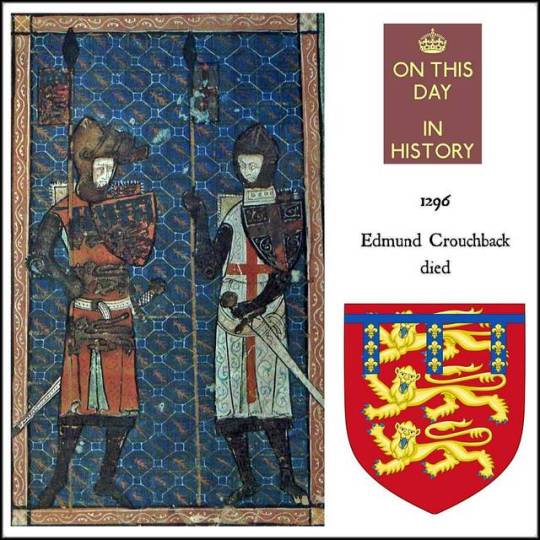
On This Day In History
5 June 1296
Edmund Plantagenet (known as Crouchback) died aged 51
Edmund was born in London on 16 January 1245, a member of the House of Plantagenet, he was the second surviving son of Henry III of England & Eleanor of Provence.
◼ In 1265 he was granted all the lands of Simon de Montfort & from 1267 he was titled Earl of Leicester. In that year he also began to rule Lancashire, but he did not take the title Earl of Lancaster until 1276.
◼ His nickname, "Crouchback" (meaning "crossed-back"), indicating that he was entitled to wear a cross stitched into the back of his garments due to his participation in the Ninth Crusade. He had a reputation for being a ruthless & ferocious warrior.
◼ In 1271 he accompanied his elder brother Edward on the Ninth Crusade to Palestine. Edmund was loyal to his brother, Edward I, & frequently acted as an ambassador abroad.
◼ On his return from the Crusade of 1271–2 he seems to have made Grosmont Castle his favoured home & undertook much rebuilding there.
◼ Edmund's duty to the church included the foundation of a Nuns of Clara or Poor Clares nunnery at Minories, St Aldate's. In 1291, he paid for the establishment for the Chapel of Savoy, in memory of his mother, at St Clement Danes. Filial piety was part of the chivalric code of an honourable knight.
◼ He was a generous benefactor to the monastery of Grace Dieu in Leicestershire, & the nuns at Tarrant Crawford. He also helped establish a major Grey friars monastery at Preston. In 1281 he supervised the construction of Aberystwyth Castle for King Edward I to subjugate the Welsh. The next year he accompanied Roger Mortimer on campaign against Llywelyn, defeating & capturing the prince.
◼ He took an army to Bordeaux for his brother. Amongst the nobles was the Earl of Lincoln & 26 banneret knights. During the siege of Bayonne the English ran out of money, so the army melted into the countryside. Broken-hearted the warrior-prince Edmund Crouchback died on 5 June. His body was carried to England & was interred on 15 July 1296 at Westminster Abbey, London.
◼ Edmund married (1st) 8 April 1269 Aveline de Forz, the daughter of William de Forz, 4th Earl of Albemarle & Isabella de Fortibus, Countess of Devon. She died just 4 years after the marriage.
◼ He married (2nd) in Paris, on 3 February 1276 Blanche of Artois, widow of King Henry I of Navarre.
With Blanche he had three children:
▪ Thomas, 2nd Earl of Lancaster, Henry, 3rd Earl of Lancaster & John of Lancaster.
Portraits - Miniature of Edmund with Saint George from an early 14th-century manuscript, & his Coat of Arms.
#onthisdayinhistory #thisdayinhistory #theyear1296 #d5jun #EdmundPlantagenet #EdmundCrouchback #EarlofLeicester #EarlofLancaster #HouseofPlantagenet #History #Warrior #Prince #EnglishMonarchy #Britishmonarchy #Historians #Crusades #Crusader #Warrior #Plantagenet #Plantagenets #royalhistory
0 notes
Photo
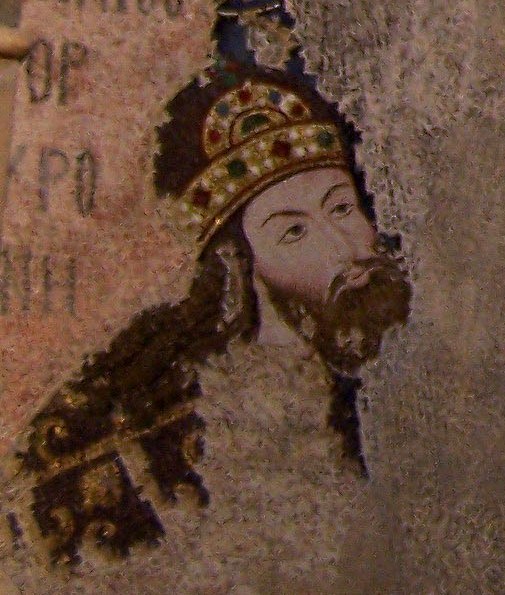

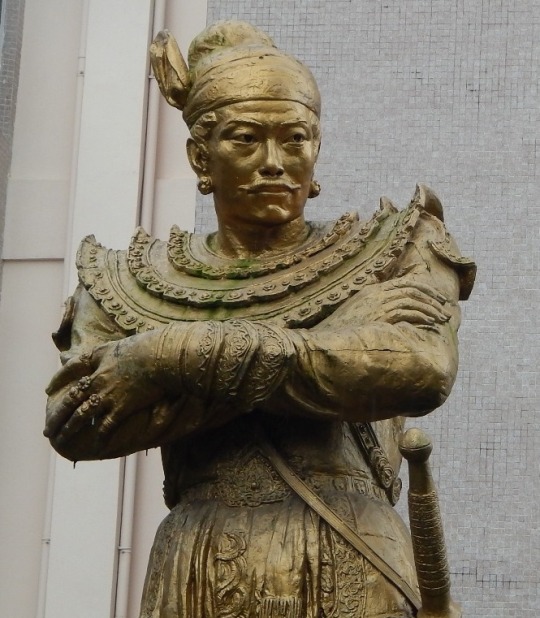
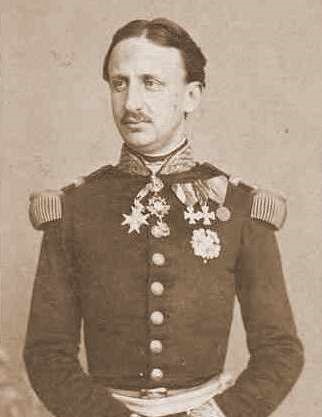
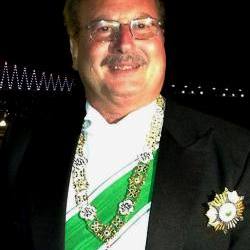
Royal Birthdays for today, January 16th:
Isaac Komnenos, Sebastokrator of the Byzantine Empire, 1093
Edmund Crouchback, Earl of Lancaster and Leicester, 1245
Bayinnaung, King of Burma, 1516
Francis II, King of the Two Sicilies, 1836
Fuad II, King of Egypt, 1952
11 notes
·
View notes